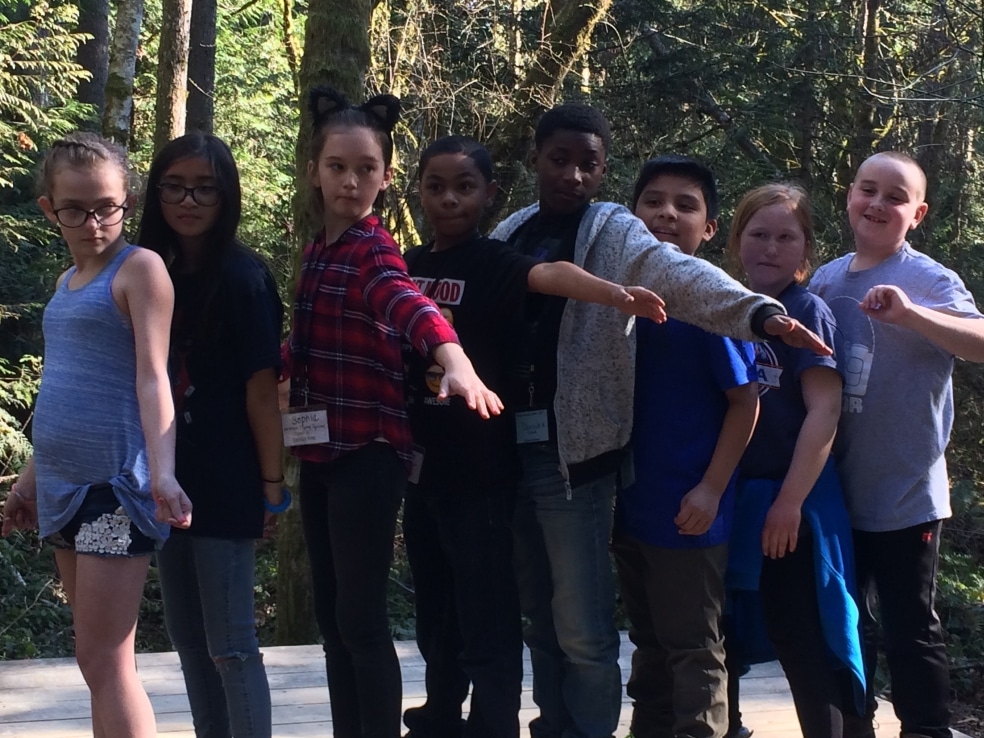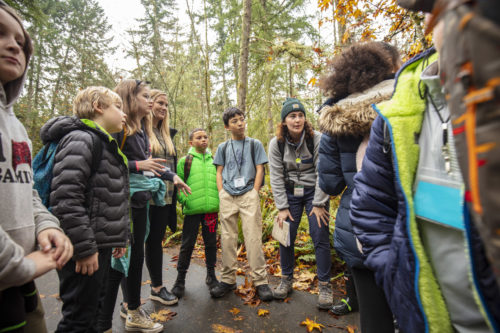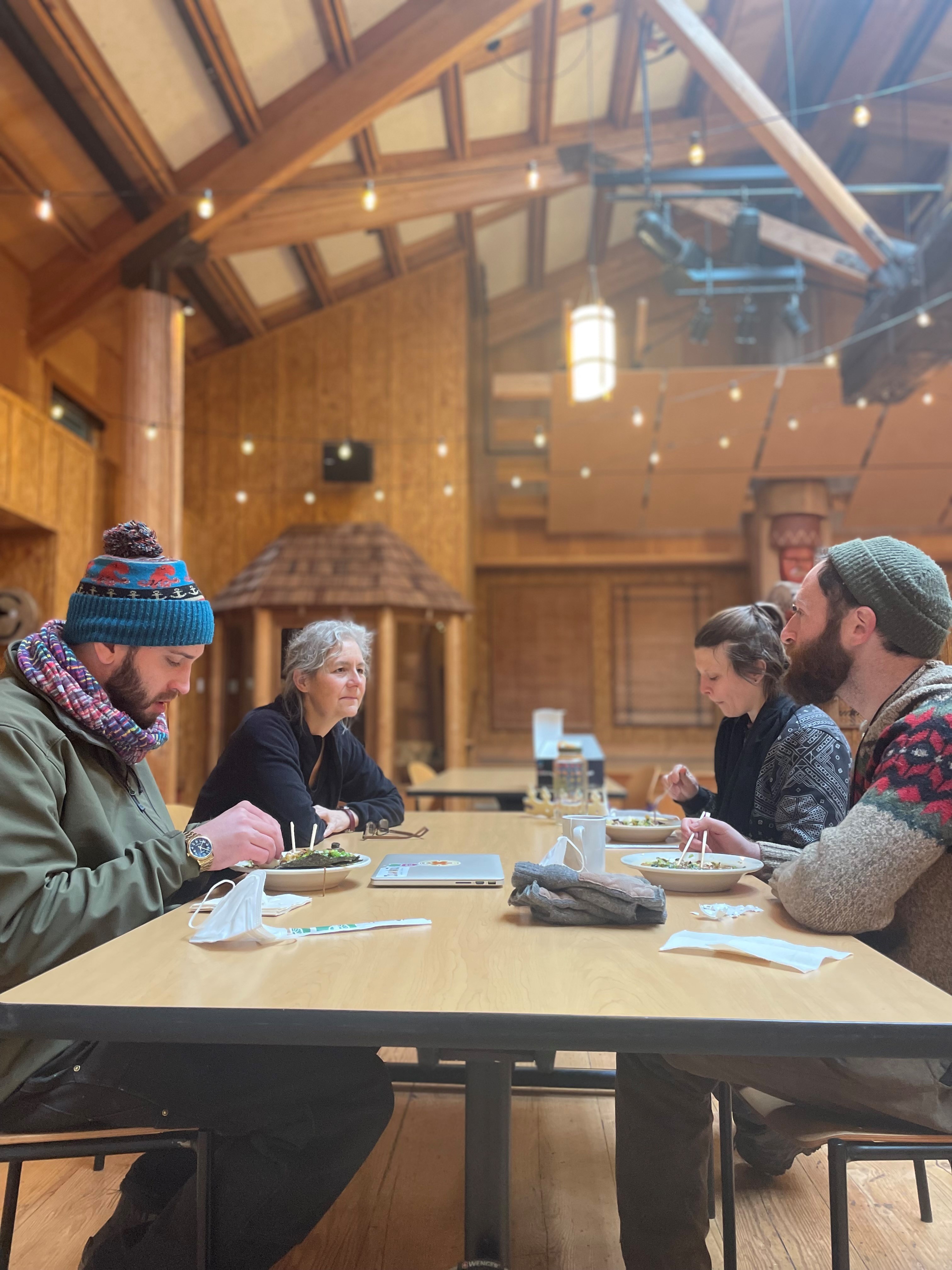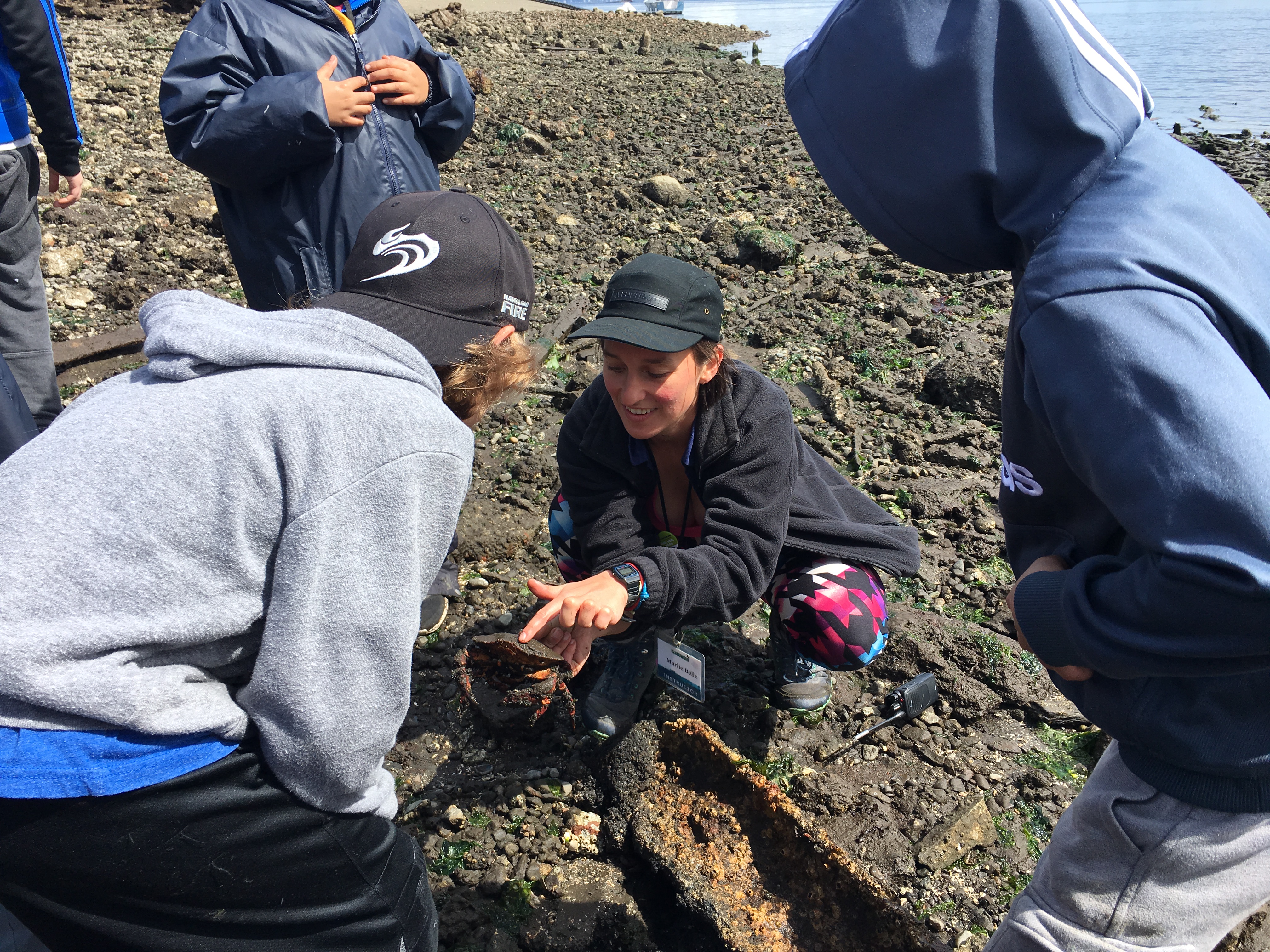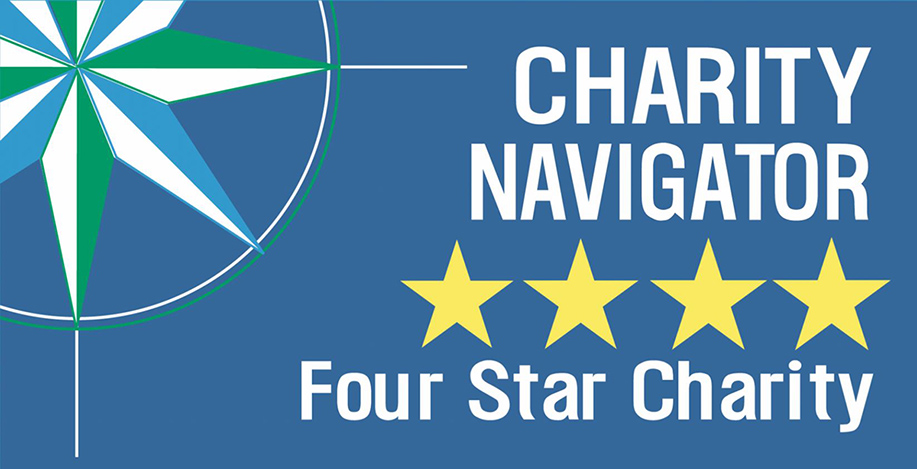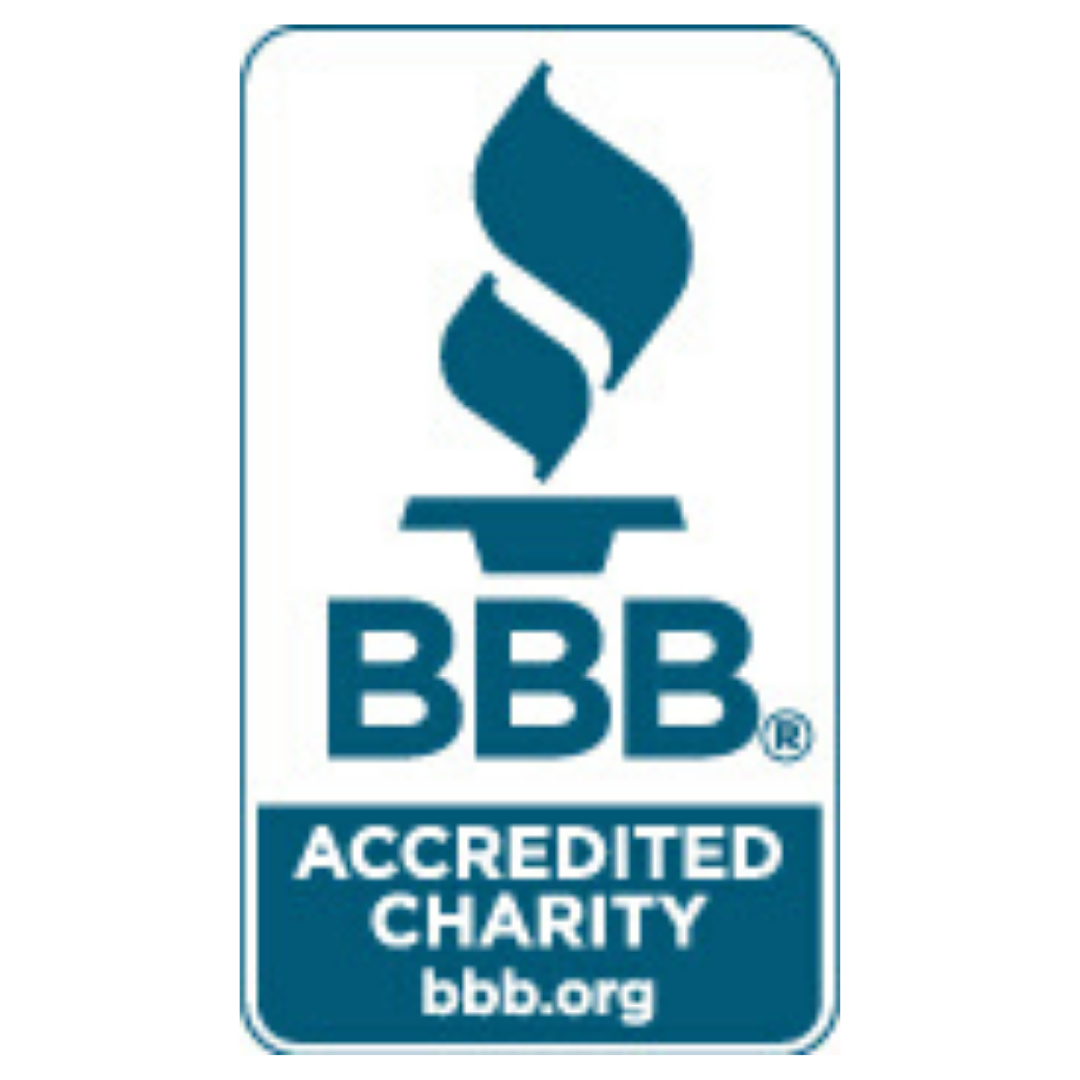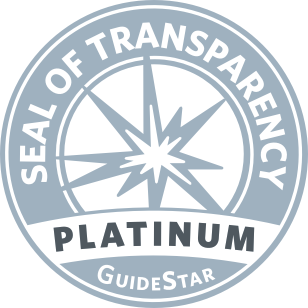As the COVID-19 crisis continues, it’s become increasingly clear that the entire field of environmental…
Author: Tamar Kupiec
When Breanna Caruso came to IslandWood last August to attend our graduate program, she knew a thing or two about facilitating a teams course. Some of that skill came naturally. She is patient, big-hearted, and lively, qualities that encourage participation and get kids excited for the adventure ahead. The technical proficiency she acquired at a previous job with an outdoor school. In that setting, however, the learning that took place at the teams course stayed at the teams course.
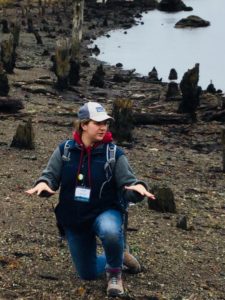
IslandWood graduate student Brenna Caruso kneeling while instructing students at Blakely Harbor.
“I had these skills in facilitating team building, but I didn’t know how to use them in a longer, broader context,” Breanna recalls thinking. “How do I fully integrate this and not have it be its own separate thing?” At IslandWood, the teams course is but one means of imparting the skills and confidence kids need to collaborate effectively and respectfully.
After eight months of teaching in the School Overnight Program (SOP), Breanna now has an extensive repertoire of team-building activities and reflective practices. And she has learned to weave them into her teaching to build rapport early on and address setbacks down the road.
While at IslandWood, students learn how everything is connected in an ecosystem and how our actions impact our communities, our planet, and the people we share it with. But if these students are ever going to tackle the problems facing our planet, they cannot go it alone. Like the living things in an ecosystem, they depend on one another, and they will need to work together to realize their collective strength.
The teams course at IslandWood is a series of forest clearings, each with a specific configuration of cables, rope, and boards, requiring balance, ingenuity, and above all, consensus. It is down a long trail and easy to miss if you’re not set on finding it. The effects, however, are felt far beyond this wooded enclave and are regularly invoked by instructors throughout the week of SOP. “Remember what a positive leader you were on the teams course?” Breanna might remind a student who needs to refocus.
On this Wednesday afternoon, she had taken her field group to the teams course to attempt the Whale Watch, a wide platform that rocks back and forth like a seesaw, or a boat. The basic idea is simple: balance the platform with all members of the field group on top. The process is more complex.
Breanna instructed the students to stand behind the “log of restraint.” One at a time they would step onto the platform, the last student on inviting the next to join her until everyone was aboard. If one end of the platform touched the ground, the person who had been on the longest would get off. “What if someone invites someone back on who already had a turn when others haven’t?” a girl asked. “Is that fair?” “That’s up to you to decide,” Breanna answered. Clearly this challenge was more than a question of balance.
By now, Breanna had been with her group over two days. She had established behavioral norms, such as taking turns when speaking and demonstrating respectful attention when not. And she had gotten to know her students and their comfort in being part of a team. Monday, at the start of SOP, Breanna had taken her field group on a solo walk, in which students, spaced a few minutes apart, follow a route marked with cards laid on the ground. The cards have prompts to encourage observation and reflection, such as “Smell the soil,” or “Who would you like to share this place with?” Breana added one of her own, “What does a successful team look, sound, and feel like?” In their group reflection, students discussed leadership styles and identified what kind of leader they were, perhaps the type to lead the pack or the type to sit back and delegate.
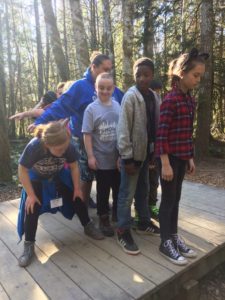
School Overnight Program students participating in a Teams Course challenge.
At the Whale Watch, the group discussed strategy and decided to line everyone up along the fulcrum. “Whoa, this is hard!” Logan said as he stepped on. The board teetered but did not touch. Halley followed, at Logan’s invitation and settled into a confident, wide-legged stance. “Oh, that’s a touch!” Breanna called out, and Logan got off. One by one, the students boarded the boat, causing it to teeter precariously. Over and over, they would get all but one on board, and then with the addition of the final person, the platform would touch. The mood was alternately animated and suspenseful. Techniques were refined, innovations attempted.
Already the group was showing signs of fatigue and loss of focus. “Maybe we should take a deep breath,” Ethan suggested. Whether due to the calming effect of that breath, luck, fortitude, or all three, they at last got everyone on board with both ends of the platform balanced midair. Throughout the week, with each game and investigation and here at the teams course, Breanna had made a point of differentiating between goal and task. In this context, she explained, the task was balancing the board. The goal, however, was acting as a team. With or without that final triumph, she told them, they had achieved their goal.

